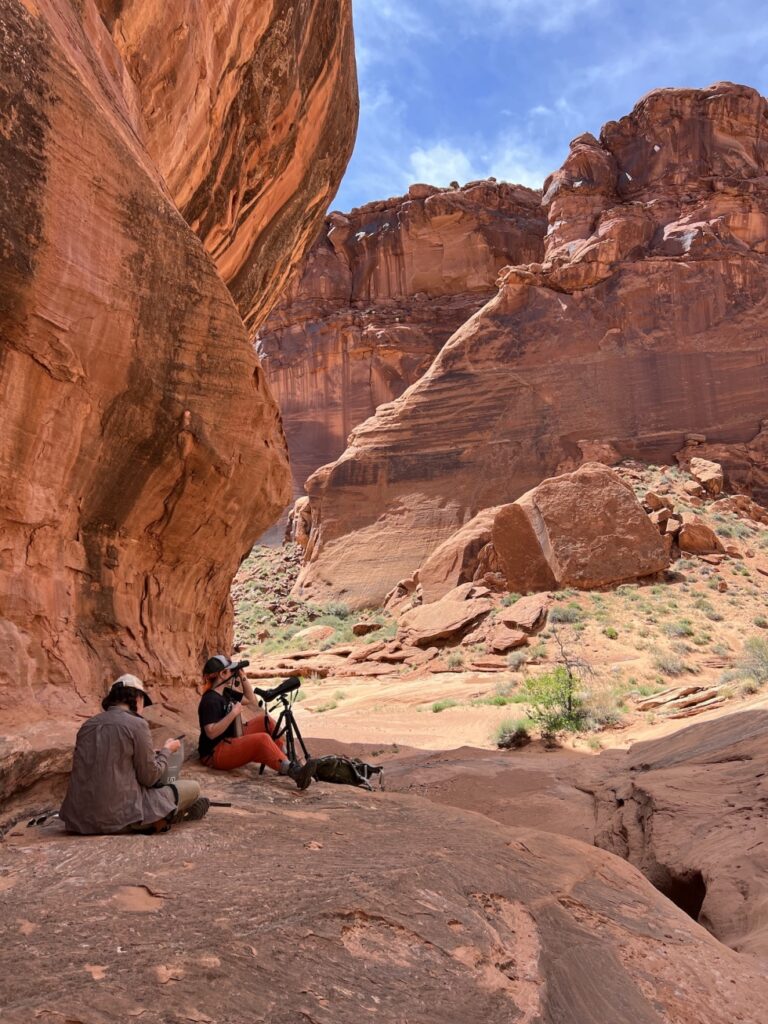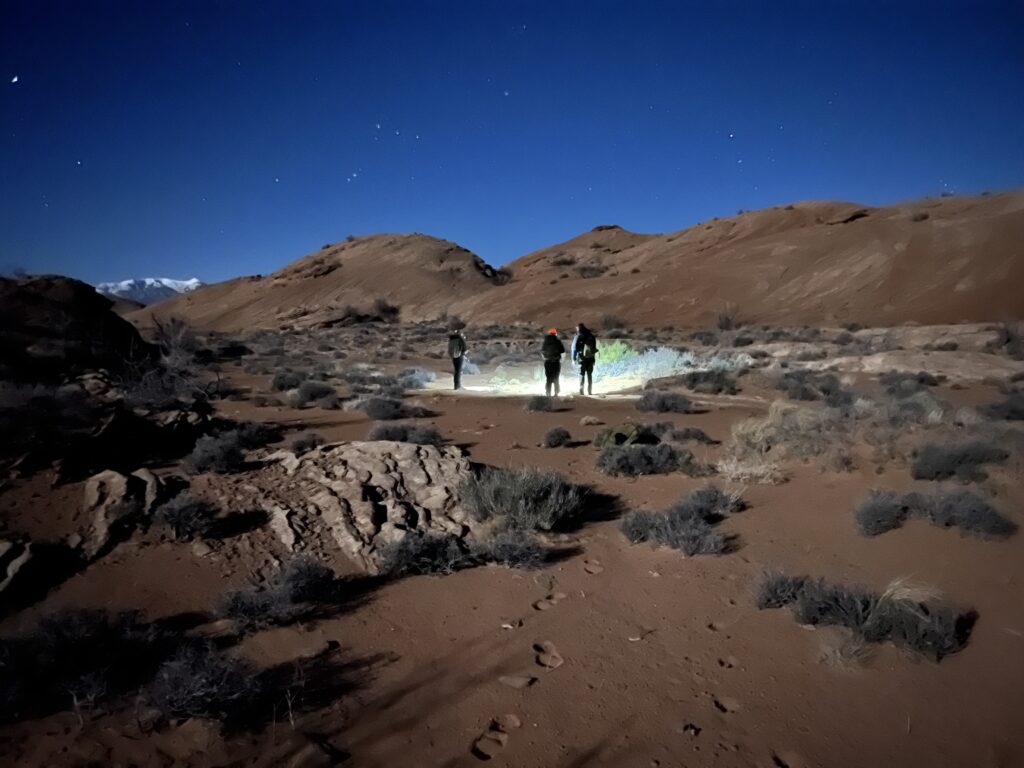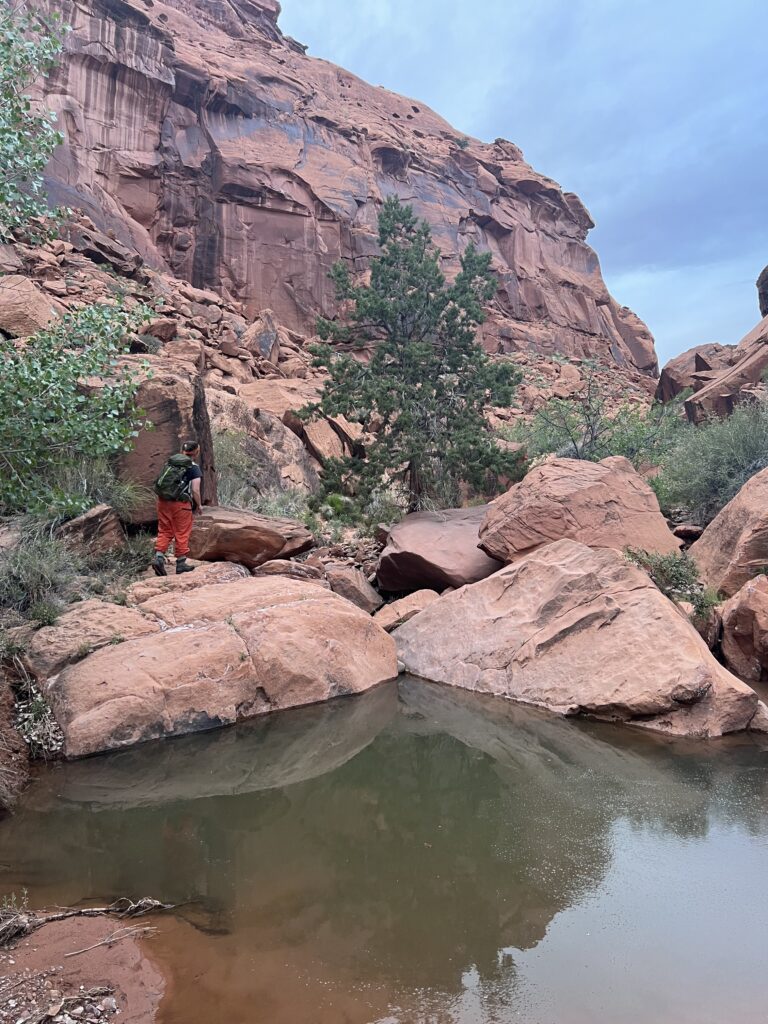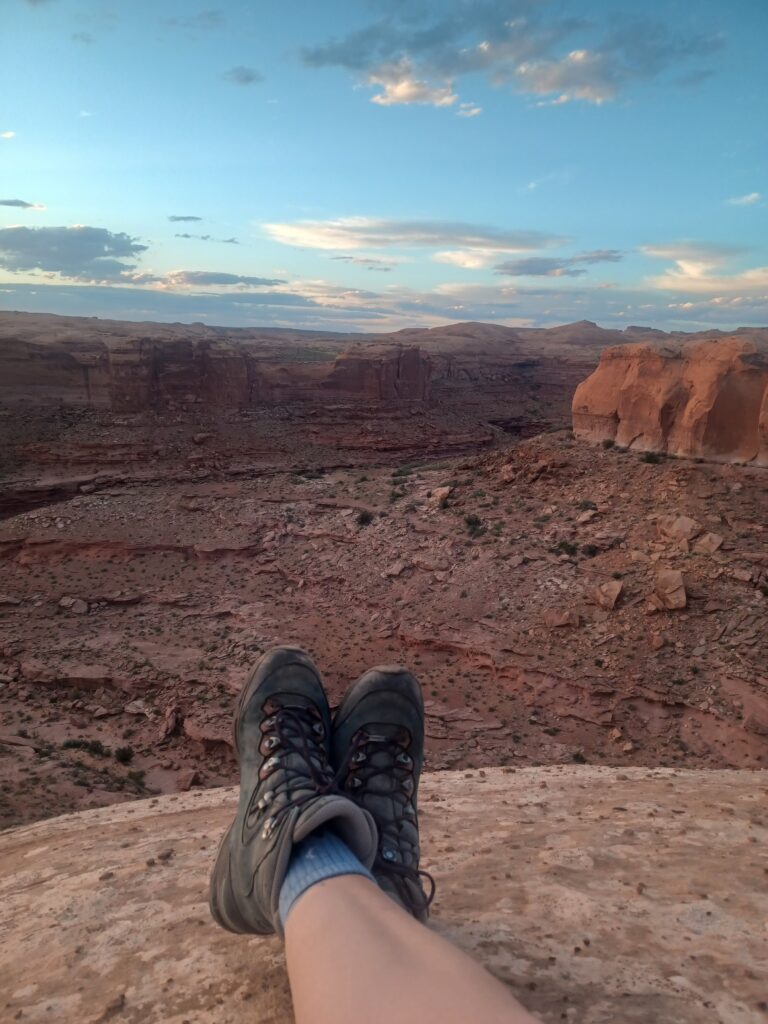
When we picture Spotted Owls, we often imagine a silent and enigmatic figure amidst the backdrop of a dense and shadowy old-growth forest. However, unlike the California Spotted Owl and the Northern Spotted Owl, the Mexican Spotted Owl (Strix occidentalis lucida) inhabits the four corners region of the United States. Utah’s Spotted Owls seek refuge in steep-sided canyons of the Colorado Plateau that offer essential features such as a consistent water source, mixed trees and riparian vegetation, and an abundance of ground litter and woody debris. These owls prefer to nest and roost on rocky ledges or within the crevices of canyon walls.
Unfortunately, Mexican Spotted Owls face many potential threats, including recreation, overgrazing, road development, resource extraction, catastrophic fires, and timber harvesting. These threats, among others, eventually led to the listing of Mexican Spotted Owls as “Threatened” in 1993.
To ensure the recovery of the Mexican Spotted Owl, comprehensive recovery plans were developed. A crucial part of the plan involves conducting regular surveys to monitor trends in Mexican Spotted Owl occupancy and breeding status.
In collaboration with the Bureau of Land Management, HawkWatch International has taken on the responsibility of surveying seven canyons in Southern Utah to look for signs of the elusive Spotted Owl.
In April 2023, HWI’s dedicated team members, Frankie Vierela and Laura Kwasnoski, embarked on an ambitious and challenging mission: surveying for Spotted Owls in the remote and rugged terrain of Utah’s Canyonlands. Will their sleepless nights and long hikes pay off? Continue reading to hear the first-hand account from our Crew Lead, Frankie!
Notes From the Field: Frankie’s Experience as the Crew Lead of Mexican Spotted Owl Surveys
Prior to this season, my Spotted Owl experience had been working with California Spotted Owls, which are found in the conifer forests of the Sierra Mountains in California. These owls live in dense forests of huge trees such as Sequoias and Sugar Pines and nest almost exclusively in tree cavities. It was quite a change to shift from searching these forests to hiking through the desert and canyons and searching for owls in the canyon walls. I’ll admit that while I was very excited, I was also a bit intimidated to survey for these owls in an environment with which I was completely unfamiliar.

Our first trip down to the study area was truly an eye-opening experience. Originally, we thought we would be able to survey multiple canyons in one night and complete a large portion of the surveys before returning to our home base in Salt Lake City. However, we quickly realized this would not be the case given how vast and remote the field site was.
After setting up camp, we headed into the first canyon. We were mesmerized by the size of the sheer cliff walls, the various colors of the different rock layers, and the incredible wildflowers and plant life throughout the bottom of the canyon. At dusk, before we had even started calling our first point, we heard the distinct four-note call of a male Spotted Owl. Shortly after he started calling, we heard a female answer with a contact note and a barking call. We even saw a glimpse of their silhouettes as they flew out from the canyon wall!

We couldn’t believe we’d been able to detect our first pair of birds so quickly and hiked back out of the canyon with plans to come back the next day and find their roost spot in the daylight. Feeling confident the next morning, we hiked the five miles back into the canyon to the area where we detected the birds, bringing our spotting scope, binoculars, and optimism. We scanned the cliff walls looking for signs of the pair of owls we heard the night before. Despite our efforts, we were unable to find the birds; there were no areas with significant whitewash, no pellets, or any other sign that the owls had been there at all. We hiked back out without discovering the elusive owls’ roost spot but were still very excited to have a pair in this canyon since it had apparently been vacant since 2019. The next few nights involved driving rough roads with a lot of rock crawling and sandy conditions to reach the other canyons. Unlike the previous canyon, most of these surveys involved calling (hooting) to owls from the rim of the canyon, as there was no easy access into the canyon bottoms without some serious backpacking and/or canyoneering. All in all, it took us seven nights to complete the first round of surveys, and between scouting routes, searching for owls, and accessing call points, we’d hiked over sixty miles! Safe to say, we were dirty and exhausted (keep in mind we were camping for the duration of our time in the field).
One of the biggest risks working in these canyons, apart from the nature of hiking steep, slick rock with a sheer drop into canyons at night, was flash floods. If a flash flood were to occur while in the canyon, there would be few areas to safely get to higher ground before things became extremely dangerous or potentially deadly. This meant any threat of significant rainfall or thunderstorms would likely be an end to surveying for that evening. The monsoon season in southern Utah is usually in July or August, but this was a very wet spring and early summer, and there was rain forecasted for multiple days while we were in the study area. During our surveys later in the season, we got caught in the rain several times and even saw a nearby lightning storm from the canyon rim, which halted survey activity for the night.
Our surveys were far from unsuccessful, however! Two of our team members (project supervisor Jordan Herman and field technician Laura Kwasnowski) were able to discover the roost spot of that first pair of elusive owls! This involved backpacking into the canyon and staying overnight to wake up before dawn to try to detect the owls coming back to roost for the day. The owls were heard calling to each other around 4:30 in the morning.

Jordan and Laura got up and started searching for them and were able to follow the pair to a crack in the cliff face and saw both owls go into the crevice. There was no way we would have been able to identify this as the roost without having seen the owls go into it! There was no buildup of whitewash or pellets visible from the outside. This discovery was huge as Spotted Owls will tend to reuse the same roost or nest spots for multiple years!
Our survey efforts also showed that five of the seven canyons were occupied (four pairs and one single male), which will be valuable information for the Bureau of Land Management when making future management decisions in this area.
This season was full of new learning experiences and challenges, but we were extremely pleased with our results! In addition to all the owl detections, we were also able to gather intel on the best way to approach the surveys in this challenging environment, which will set up next year’s surveyors with a good understanding of exactly what it takes to survey for these unique—and at times sneaky—owls in this incredible environment.
Remember: encountering a Mexican Spotted Owl in a canyon is a remarkable experience. To minimize our impact and promote their well-being, there are a few guidelines to follow. First and foremost, if you see or hear an owl, maintain a safe distance to avoid disturbing their natural behavior. Keeping noise levels to a minimum is also essential. To minimize disruption, we recommend that birders or recreationists do not attempt to call to owls. Your presence may alert a predator that is waiting nearby! Preserving the integrity of their habitat is paramount, so make sure to Leave No Trace. Happy adventuring!
This blog was written by Jordan Herman, HWI’s Conservation Biologist and Frankie Vierela, HWI’s crew lead.
You can learn more about Jordan here.
Photos by Jordan Herman
